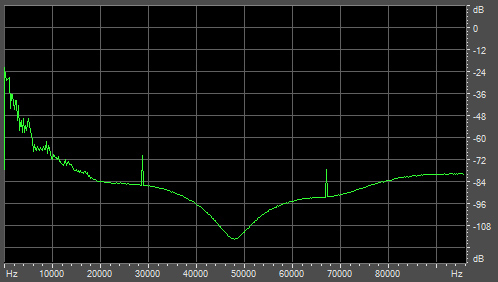
Fokus
Retained
-
Member Title
Member
Personal Information
-
Location
between Venus and Mars
Recent Profile Visitors
17796 profile views
-
Must have been nice office spaces, having 20k worth of plants. Reminds me to water the (lone) bonsai behind my back ...
-
It is never a good idea to create a loop.
-
FWIW, a trick in the late 80s or so was to cover the inside of a component housing in standard anti-ESD black conductive foam used for protecting ICs. But beware, this stuff can be extremely flammable!
-
Actually, yes, we are saying the same. I am not following this thread anymore, at least not with anything approaching full attention. I say the "no-one is saying ...:" and jumped on that. What would you like to see? I did most of my analysis in 2016-2017. As I have lost all interest in MQA years ago I did not keep all results, and neither do I remember exactly what results of others (Archi, Mansr, ...) were published how and where. Below is the spectrum of some (now unknown) MQA track played through an MQA DAC and recorded back at 192kHz. The track was announced as 192kHz, and came in a 48kHz container. You can see that the 0-48kHz passband is genuine (e.g. the 28kHz spike, which is unique), and that everything above 48kHz is the (leakily filtered) first image of the base band. This corresponds to MQA being an effective channel for 96kHz sampled data, with very leaky upsampling above that. None of this is a secret, or new, so I can barely imagine that this is what you want.
-
This is actually not quite correct. A system sampling at Fs can represent a signal of any frequency, provided that this signal's spectrum does not occupy a stretch exceeding Fs/2 in length on the frequency axis. In other words, the band of interest is no longer the traditional baseband 0 - Fs/2, but rather Fo - Fo+Fs/2. Upon reconstruction the correct image has to be selected by a band filter. This property is used in telecomms, and also in MQA. This is exactly how they, given an Fs=96kHz original, 'fold' the signal range of 24-48kHz into an Fs=48kHz distribution file.
-
Learn how to read, both of you. And there are no three unfoldings. Only one. Or none.
-
'Full Decoding' is obtained by 'Core Decoding' in software (on a PC or else a microprocessor in the DAC box), and then 'Rendering' in the actual DAC chip. Core Decoding is the decryption and then the first (and only) unfold. Rendering is upsampling with extremely simple short filters. If I rememember correctly. I have been out of this BS for a long time now. Rest assured that I have forgotten more about MQA than you will ever know, let alone understand.
-
The key word here is 'emulator'. If the plug in was singing and dancing MQA then there would be no need for this word.
-
Is early 2015 'start' enough? By that time some people already knew a lot about MQA, and objected. https://pinkfishmedia.net/forum/threads/mqa.170431/#post-2554213
-
Neither do you, because your examples are very atypical for mere audio DAC chips. FX is sort of right here. The two most-likely courses of action for MQA-enabled silicon, in case MQA disappears, are: 1) do nothing, assuming this is legally acceptable (or you happen to be in China, of course) 2) if forced to disable: metal mask revision, the result of which being that the MQA part simply no longer can be enabled. In laymen's terms this could be called 'wire cutting', but it isn't. Just writing as someone who has designed many chips and who has co-owned two semiconductor companies.
-
MQA is dead. Given some time, its trolls will die, too. Provided you don't feed them.
-
Just pointing out that Texas happens to be the Mecca for plaintiffs in patent-related cases. That's where the patent trolls go when they get down to business. Ask me how I know.
-
A patent troll? In Texas??? Noooo.
-
Guess what? I was just disabled from ASR for simple disagreement!!!
Fokus replied to John Dyson's topic in General Forum
What I see is a clash between on the one hand an acknowledged paragon of audio science, signal theory, and perception, and on the other hand a conspiracy theory backed up with wild claims and no actual proof. Sorry. -
As this is for a serious application and you seem to be in Canada I would contact the acoustics department of the NRC and/or of your university. https://nrc.canada.ca/en/certifications-evaluations-standards/instrument-calibration-services/acoustical-standards-calibration-services This said, much like loudspeakers, microphones have an infinite number of frequency responses.








